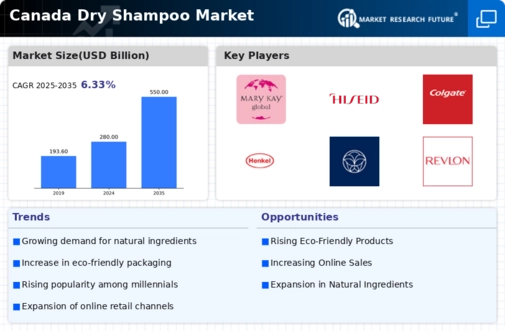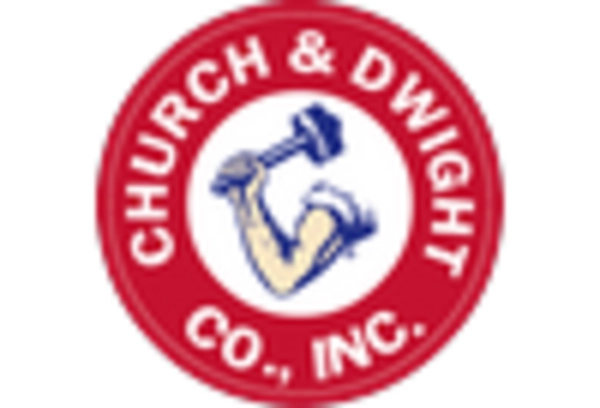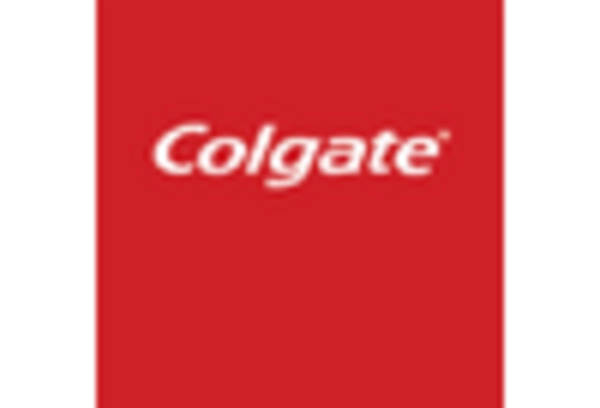Influence of Fashion Trends
Fashion trends play a pivotal role in shaping the dry shampoo market industry in Canada. As hairstyles evolve and new looks emerge, consumers often seek products that align with current trends. The popularity of effortless, 'lived-in' hairstyles has led to an increased reliance on dry shampoo as a styling aid. This trend is particularly evident among younger demographics, who are more inclined to experiment with their hair. The dry shampoo market industry has responded by introducing innovative products that cater to these fashion-forward consumers, including tinted formulas and volumizing sprays. Market analysis suggests that the influence of fashion trends could drive a projected growth of 10% in the dry shampoo market industry over the next few years.
Focus on Sustainable Packaging
Sustainability has emerged as a key consideration for consumers in Canada, influencing their choices within the dry shampoo market industry. As environmental concerns grow, brands are increasingly adopting sustainable packaging solutions to appeal to eco-conscious consumers. This focus on sustainability not only addresses consumer preferences but also aligns with regulatory trends aimed at reducing plastic waste. Recent market data suggests that products featuring eco-friendly packaging have experienced a sales increase of 30% in the dry shampoo market industry. This trend indicates a potential shift towards more responsible consumption patterns, as consumers prioritize brands that demonstrate a commitment to sustainability in their product offerings.
Growth of E-commerce Platforms
The rise of e-commerce platforms has significantly impacted the dry shampoo market industry in Canada. With the increasing preference for online shopping, consumers now have access to a wider range of products than ever before. This shift has enabled brands to reach a broader audience, particularly among younger consumers who favor the convenience of online purchasing. Data indicates that online sales of dry shampoo have surged by 25% in the past year, highlighting the importance of digital channels in the market. As e-commerce continues to grow, brands are likely to invest more in online marketing strategies and partnerships with e-retailers to enhance their visibility and accessibility in the dry shampoo market industry.
Rising Awareness of Hair Health
In recent years, there has been a growing awareness among Canadian consumers regarding the health of their hair. This trend is influencing purchasing decisions within the dry shampoo market industry, as individuals become more discerning about the ingredients in their hair care products. Consumers are increasingly seeking formulations that are free from harmful chemicals and enriched with nourishing components. This shift towards health-conscious choices has led to a rise in demand for natural and organic dry shampoos, which are perceived as safer alternatives. Market data indicates that products labeled as 'natural' have seen a sales increase of 20% in the dry shampoo market industry, reflecting a significant shift in consumer preferences towards healthier options.
Increasing Demand for Convenience
The dry shampoo market in Canada experiences a notable surge in demand driven by the fast-paced lifestyle of consumers. As individuals seek convenience in their daily routines, dry shampoo offers a quick solution for refreshing hair without the need for traditional washing. This trend is particularly prevalent among busy professionals and parents, who often prioritize time-saving products. According to recent data, the convenience factor has contributed to a growth rate of approximately 15% in the dry shampoo market industry over the past year. This increasing demand for convenience is likely to continue shaping product offerings, with brands focusing on easy-to-use formats and travel-friendly packaging to cater to the needs of on-the-go consumers.

















Leave a Comment